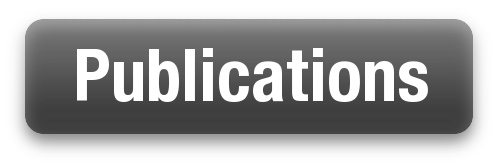Warning: count(): Parameter must be an array or an object that implements Countable in
/home/f5ixv0caczn0/public_html/wp-content/plugins/microkids-related-posts/microkids-related-posts.php on line
645
Customs and Border Patrol recently started a new public awareness campaign entitled “Don’t Be Fooled” to raise awareness of human trafficking. The ads feature a Hispanic man or woman in chains, in shackles, and in one case being choked. They then warn that slavery still exists and that it is called human trafficking. The ads include the national trafficking resource center hotline number that is paid for by HHS and maintained by the Polaris Project. This campaign is part of a larger campaign of “No Te Engañes.” No Te Engañes started last year in Central America and Mexico to bring awareness to sexual slavery and forced labor that could happen to potential migrants. This is part of an even bigger campaign the Blue Campaign sponsored by the Department of Homeland Security.
It is good that these efforts are being undertaken by the American government to warn and inform potential migrants about the dangers and reality of human trafficking. I am concerned, however, that they neglect the true face of trafficking and works to perpetuate myths about what human trafficking is to the detriment of the largest population of victims in the United States.
According to the Bureau of Justice Statistics publication the Characteristics of Suspected Human Trafficking Incidents, 2008-2010 (NCJ 233732) of the 527 confirmed victims of trafficking that the federal government and its funded task-forces found only 87 were foreign nationals. This means that 84% of victims were U.S. citizens who did not migrate here seeking a better life, but men and women who were entrapped in their own country. Instead of highlighting the fact that U.S. citizens are risk, the government warns migrants which perpetuates the myth that trafficking happens those coming from elsewhere.
It is true that others have anti-human trafficking programs other than DHS. DOJ, DOS, HHS, and the FBI all have anti-trafficking divisions or people working on anti-trafficking efforts, but they all portray trafficking in a way that makes it seem it is a problem of others coming to the United States. The FBI’s faq about trafficking (found athttp://www.fbi.gov/news/stories/2006/june/humantrafficking_061206) imply that victims are people coming from other nations or immigrants, HHS’s department of trafficking is in the Office of Refuge Resettlement, and DHS’s work involves mostly customs enforcement. Additionally, the national inter-agency task force is named the Human Smuggling and Trafficking Center which further conflates the confusion of trafficking with movement.
While this is campaign could be appropriate for Customs and Border Protection, as they interact with primarily immigrants, this trend of focusing on international trafficking to the exclusion of domestic trafficking is something seen in all of the Department of Homeland Security’s media.
As mentioned before the “Don’t be fooled” campaign is part of a larger campaign entitled the Blue Campaign. The Blue Campaign has focused almost exclusively on preventing the trafficking of immigrants. According to DHS’s website at http://www.dhs.gov/ynews/gc_1279809595502.shtm the blue campaign has put together a pamphlet for emergency responders, law enforcement officers, and healthcare professionals geared to immigrants and immigration options as well as giving guidance on using the TVPA to help immigrants remain in the United States.
Their “Hidden in Plain Sight” ads were better as they stated that victims of trafficking can be of “any race, any age, any nationality”, but they should be highlighting that they are overwhelmingly US citizens. Again, I think this is good work that the government should be doing, but when the numbers tell us that the vast majority of victims are U.S. citizens it would seem that the resources should be going to helping domestic victims.
Perhaps I am being too harsh on DHS’s approach though; it is not entirely their fault that they have taken the approach that human trafficking is something that happens to poor immigrants and not to American citizens. When human trafficking first started gaining momentum in the late 90s it was viewed as a primarily international problem. It had to be, because it could not be imagined that in a developed country like ours there would be people who would hold others in bondage. We did admit that it was possible that uneducated foreigners looking for better lives were tricked into coming to the United States and those were the victims that we have all been trained to see.
One of the reasons we think about trafficking this way is inherent in the term human “trafficking.” Trafficking implies movement such as drug trafficking or weapons trafficking, but human trafficking does not require any movement at all. A person can be “trafficked” in the town they were born in and never leave the house. It might be best to talk about human trafficking in terms of sexual exploitation and labor exploitation, but that is beyond the scope of this post.
Another myth that the government promotes in this ad campaign is that those being trafficked are being held in chains. A victim of trafficking, particularly sex trafficking are very rarely held by physical chains, instead they are held by force, fraud, and coercion. This includes both coercion by controlling addictive substances, abuse through beatings, and complicated psychological coercion that I do not begin to understand. The government should expand on this in its public awareness campaigns. If the government truly wants to raise awareness about what victims look like they should be showing accurate representations of what victims look like.
A second reason why the federal government has taken this approach of focusing on foreign victims is the current state of the law. The Trafficking Victims Protection Act and the William Wilberforce Trafficking Victims Protection Reauthorization both focus on the international efforts of stopping trafficking. They provide money for the State department, they outline services that victims are entitled to, including the extensive visa options, and then it also provides funds for these victims. These funds could possibly go to domestic victims, but the Department of Justice has interpreted it so only non-nationals are entitled to federal money for trafficking victims.
This Center has at least published a report on domestic human trafficking (http://www.state.gov/documents/organization/113612.pdf) which recognizes that the TVPA does not provide USC (United States Citizens) victims with any special benefits or services. They outline that US citizen victims are entitled to emergency shelter, food, and counseling and legal assistance and there is no requirement for certification by HHS to receive these benefits but many of these services are not available unless/until a charge is filled against their trafficker while victims often need immediate help. Some states also offer a crime victim compensation program, but this money is rarely easy to obtain for someone with little education and normally does not provide enough to give a victim any true options if they do not have a support network. This means that US citizens are not eligible for social services advocacy and humanitarian services need to meet their daily needs, legal services, job training, or any of a multitude of other services they would qualify for if they were non-citizens.
Generally the reasoning behind this is stated that US citizens already have other social services available to them, but as anyone who has had to rely on these service can tell you, they may take months to come in and are difficult to apply for. A non-citizen is entitled to an intensive case manager to help connect victims to services but a U.S. citizen receives no such help.
As the Human Smuggling and Trafficking Center stated in 2008
“However, while all victims may avail themselves of the services of law enforcement Victim-Witness specialist, USC victims do not have a victim advocate (or case management specialist) who can advise and deliver these services and benefits in an expedient organized manner that facilitates stabilization of the victim. USC victims need the same long term care as foreign victims. HHS and OVC both receive appropriated human trafficking federal funds to assist foreign trafficking victims; however, there have been no such appropriations to assist USC victims. To adequately care for USC victims, governmental agencies should continue to seek appropriated federal funding.”
This brings us to the action point: The TVPA is up for reauthorization this year. It is up to the American people to express to Congress that American victims should be entitled to the same services that non-citizens are entitled to. Furthermore that monies should be given to HHS to help US victim and that the law should affirmatively state US trafficking victims are entitled to services. Let your representatives both that you support the TVPA re-authorization, but that you also think it needs changed.





Really insightful piece here.